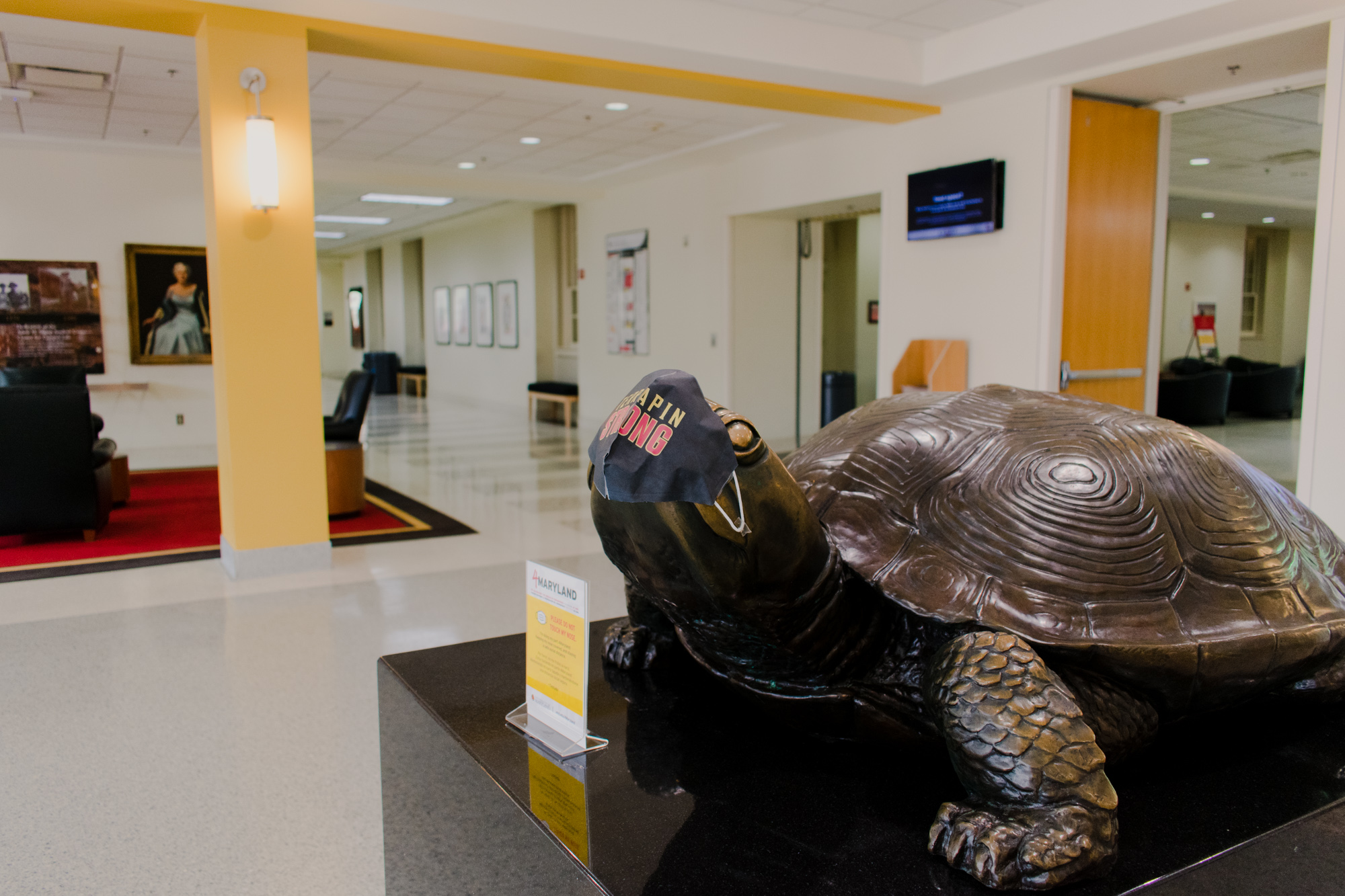Views expressed in opinion columns are the author’s own.
In May, when the University of Maryland announced that students would be returning to the campus for the fall semester, one thing was immediately clear to all: students were going to get sick. The administration knew that “despite all of [their] best efforts, people on our campus will get COVID-19,” as Patty Perillo, student affairs vice president, admitted in a July email to students. So, the university focused its attention on an issue they’d struggled with in the past: limiting the school’s legal liability.
After the university faced the threat of lawsuits from the Paregol and McNair families, university President Darryll Pines didn’t want to repeat the Loh administration’s mistakes. To be clear, this didn’t mean prioritizing the health and safety of students over the financial wellbeing of the university — that would mean closing the campus and reducing tuition and fees! Instead, Pines and his advisers focused on making sure no one could blame them for a possible outbreak; or at least, that no one could do so in a court of law.
Thus, the administration created a loose web of safety regulations that appeared thorough, but only addressed the individual issues that contribute to an outbreak rather than the macro issue of a return to campus. First, they mandated the completion of an online COVID-19 training course, which included signing the “I am 4 Maryland Commitment to the UMD Community” pledge. Here, students promised to wear a mask, socially distance, wash their hands and isolate in the event they contract the virus. To be clear, these are all good safety measures that will prevent the spread of COVID-19 — but they’re also naive. The school knows that by choosing to have thousands of young adults return to the campus, at least a portion of the population won’t follow these restrictions. However, even after an outbreak, the university can still reject blame and lament that students should have followed the guidelines they agreed to.
Additionally, the university, in compliance with USM guidelines, mandated testing and symptom monitoring and reporting to ensure the identification and isolation of any students who contract the virus. In theory, having students continuously monitor their health is another good safety measure. However, execution of the measure was … strange, to say the least. While students were required to get tested several times, the actual means of uploading this information seems half-assed. Individuals weren’t required to actually upload any documentation of negative results, and since the survey simply asked if the result was negative, it’s highly dubious the university is independently verifying these results.
The symptom monitoring has the exact same issue as testing. Each day, students, staff and faculty are expected to report any possible symptoms of COVID-19, including reporting if they have a temperature over 100.4 degrees Fahrenheit. However, there’s no real follow-up to ensure the entries are valid. The university could ask individuals to at least input their temperature that morning or even post a picture of the thermometer reading. Instead, those who want to go to work or to school can simply check the box indicating no symptoms with relative impunity.
In these three cases, the university puts up a facade of safety-prioritization without the stringent procedures to back it up. But if those examples didn’t prove that the university is trying to limit their personal liability, this last one will — because it does so explicitly. Those staying in on-campus housing were required to sign an addendum to their initial agreement. Here, they acknowledged they’d receive fewer services and agreed the university doesn’t have to refund them if campus shuts down. Most notably, though, is the final line: “I acknowledge the contagious nature of COVID-19 and voluntarily assume the risk that I may be exposed to or infected by COVID-19 on campus and that such exposure or infection may result in serious illness and/or death.”
Now, some will be inclined to say that the university is shifting liability onto students because an outbreak is the students’ fault. They’re the ones not following guidelines or choosing to falsely report symptoms. And, to an extent, that reader would be right. However, the administration can’t claim to be blameless when they invited students to come back in the first place, knowing the risks. Secondly, and more importantly, reckless individuals will come into contact with innocent bystanders, whether it’s in an in-person class, at the dining hall, or elsewhere around the campus.
If the university legitimately cared about student safety, rather than limiting its own liability, it would require corroboration of results, aggressively punish violations of the 4Maryland pledge and not allow people to stay in university housing — or it would not have brought students back in the first place. Instead, the administration can and will shrug their shoulders, blaming the students whose lives are at risk because of their school’s reckless actions.
Jake Foley-Keene is a junior government and politics major. He can be reached at jakefoleykeene@gmail.com.



